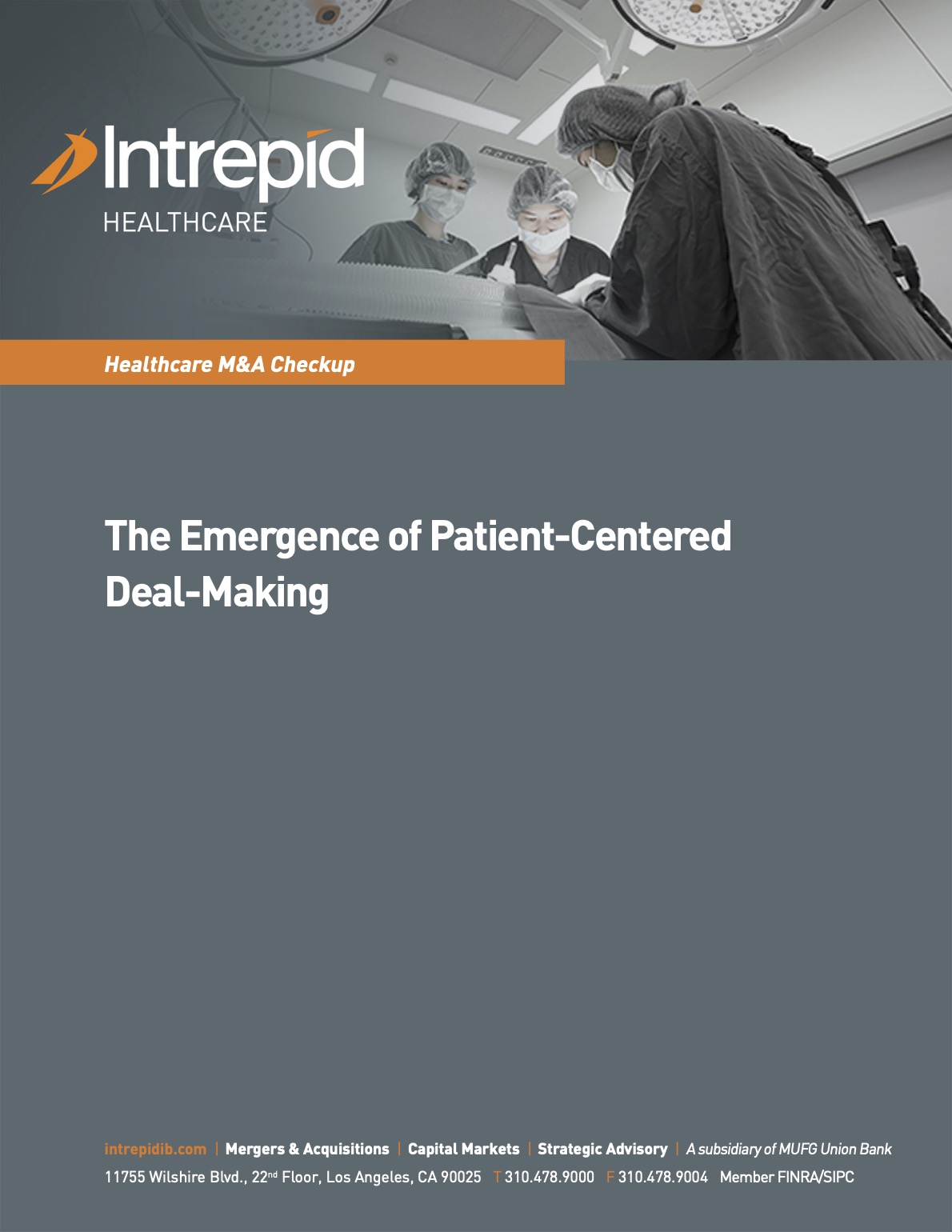Due to the advent of consumer-directed healthcare, Intrepid’s Healthcare team is seeing meaningful changes develop in the key value attributes that distinguish premium-priced healthcare companies. As business owners and investors consider their strategic alternatives, they should evaluate these emerging characteristics to put themselves in the best position for successful outcomes. Most notably, because today’s healthcare patients are acting more like consumers and informed customers than at any time in the history of healthcare, we are seeing buyers place more priority on healthcare targets’ customer service differentiators, such that we might be witnessing the emergence of patient-centered deal-making.
Out-of-network reimbursement and non-covered services have long frustrated acquirers, sellers, and patients, but seem to be making a comeback of sorts—this is relevant evidence of the emergence of patient-centered deal-making. Business owners who in the past would have presented strong cash flow driven by higher-than-normal out-of-network reimbursement were often subject to buyers assembling pro forma financial models that illustrated their businesses after reduced pricing to in-network rates. As challenging as this was for sellers, acquirers dreaded discussing this topic with sellers, as it often led to an abrupt ending to the M&A dialogue. It was a necessity, as not too long ago most acquirers assumed that providers would be forced to go in-network to gain or retain additional volume. Further, patients hated the surprise of an unexpected thousand (or multi-thousand) dollar bill from an unknowingly out-of-network provider. This was bad customer service.
Given the growing consumerism of healthcare, out-of-network reimbursement and even non-covered services are in some cases demanded by patients and no longer necessarily warranting a discount in M&A transactions. Today’s patients have access to better eligibility and benefits information and are capable of more easily determining if a provider might be in-network. They can research and select specialists, now entering a care setting with a better chance of knowing the specific price of their service. The new healthcare consumer is making informed decisions, such as selecting the supplier for their medication or implanting a specific manufacturer’s value-added device (such as a high-end intra-ocular lenses), both of which might be deemed non-covered services by a commercial insurer but considered worthy of the additional price by today’s patient.
As transaction advisors quarterbacking our clients’ M&A processes, we are seeing several other trends just like this that are changing the way buyers approach deal-making and suggest acquirers are much more focused on a patient’s voice than at any time in recent memory. For example, as specialty home health and autism services continue to draw heightened interest from investors, these companies must articulate to potential investors how they can create patient satisfaction even in venues where a patient cannot actually communicate; the complicated relationship between patients, families, friends, and their caregivers has always been challenging to describe to buyers but it is now of paramount importance due to the extra emphasis placed on patients’ voice. In several of our recent transactions, buyers have sought more comprehensive vendor, supplier, and even patient interviews to gain visibility into our clients’ quality and outcomes, but also the perceptions that patients have about the company.
Whereas just a few years ago, the scientific merits of a pharmaceutical compound, the clinical trial utility of a new device, or simply the geographic density of a specialty physician practice might be the most important attributes in an M&A transaction, it is becoming clear that investors have a greater need to prove why a company’s patients or referral sources choose them (and might continue to do so) to justify the often high multiples demanded by today’s healthcare deals.

